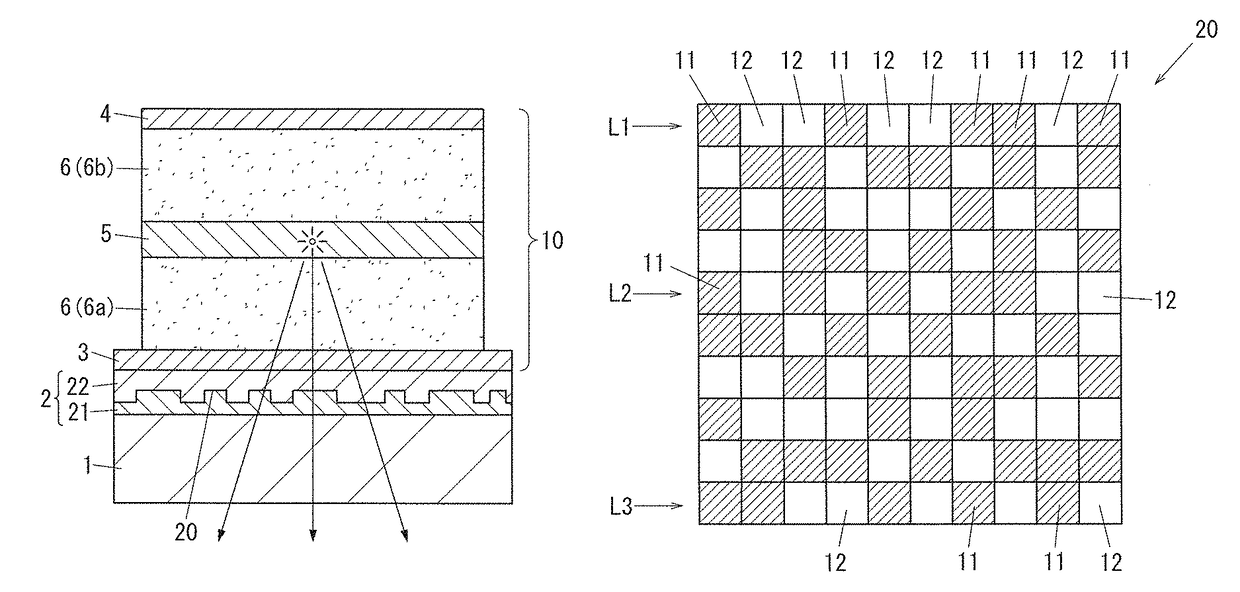Organic electroluminescent element, illumination device, and display device
a technology of electroluminescent elements and illumination devices, applied in semiconductor devices for light sources, lighting and heating apparatuses, planar light sources, etc., can solve the problem that light cannot be effectively propagated outside where light is perceived, and achieve excellent light emitting properties and high light-outcoupling efficiency
- Summary
- Abstract
- Description
- Claims
- Application Information
AI Technical Summary
Benefits of technology
Problems solved by technology
Method used
Image
Examples
Embodiment Construction
[0043]An organic electroluminescent element (organic EL element) is disclosed. The organic electroluminescent element includes: a light transmissive substrate 1; a light emitting stack 10 including a first electrode 3 being light transmissive, a light emitting layer 5, and a second electrode 4 which are arranged in this order from the light transmissive substrate 1; and at least one light-outcoupling structure 2 which has an uneven structure 20. The light emitting layer 5 has a birefringence property which exhibits a higher refractive index in a direction parallel to a surface of the light transmissive substrate 1 than a refractive index in a direction perpendicular to the surface of the light transmissive substrate 1. The at least one light-outcoupling structure 2 is provided closer to a light-outcoupling side, defined as an opposite side of the first electrode 3 from the light emitting layer 5, than the first electrode 3. The uneven structure 20 includes a plurality of protrusions...
PUM
| Property | Measurement | Unit |
|---|---|---|
| refractive index | aaaaa | aaaaa |
| refractive index | aaaaa | aaaaa |
| refractive indices | aaaaa | aaaaa |
Abstract
Description
Claims
Application Information
 Login to View More
Login to View More - R&D
- Intellectual Property
- Life Sciences
- Materials
- Tech Scout
- Unparalleled Data Quality
- Higher Quality Content
- 60% Fewer Hallucinations
Browse by: Latest US Patents, China's latest patents, Technical Efficacy Thesaurus, Application Domain, Technology Topic, Popular Technical Reports.
© 2025 PatSnap. All rights reserved.Legal|Privacy policy|Modern Slavery Act Transparency Statement|Sitemap|About US| Contact US: help@patsnap.com



